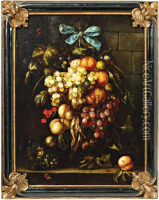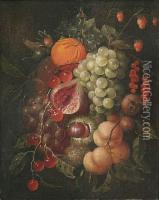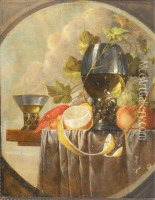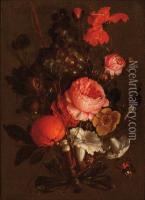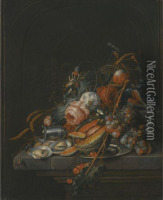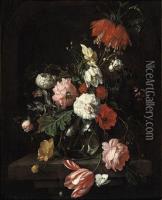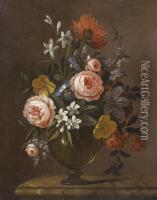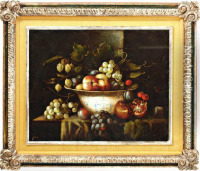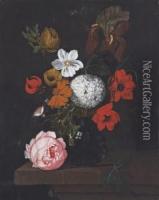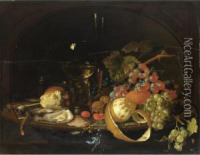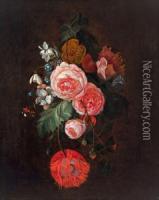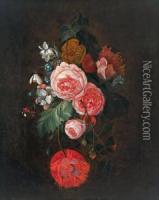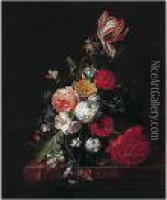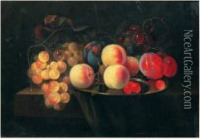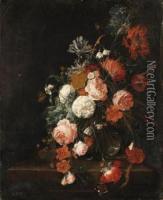David Cornelisz. de Heem Paintings
David Cornelisz. de Heem, also known as David de Heem the Elder, was a distinguished Dutch still-life painter who was born in 1606 in Utrecht, Netherlands. He was part of a family of important still-life artists, with his son Jan Davidsz. de Heem being the most famous among them. David's work is less well-documented than that of his son, but he is known to have been active as an artist primarily in Utrecht.
David de Heem's style was influenced by the Flemish and Dutch still-life traditions of the time, which often focused on depicting objects with a high degree of realism and detail. His compositions typically included an array of items, such as fruits, flowers, and sometimes insects, arranged in a manner that showcased both their beauty and symbolic meanings. The objects in his paintings not only demonstrated his skill in rendering textures and surfaces but also reflected the wealth and scientific interests of the Dutch Golden Age society.
Despite the overshadowing fame of his son, David de Heem's work contributed to the development of the still-life genre in the Netherlands. However, because his paintings are less numerous and were sometimes confused with those of his son, his individual style and contributions are not as thoroughly understood or appreciated as those of other still-life painters of his time.
David de Heem spent most of his life in Utrecht, where he worked and presumably taught his son. He passed away in 1684, leaving behind a legacy that, while somewhat eclipsed by his son's success, remains important for understanding the evolution of still-life painting in Northern Europe during the 17th century.
